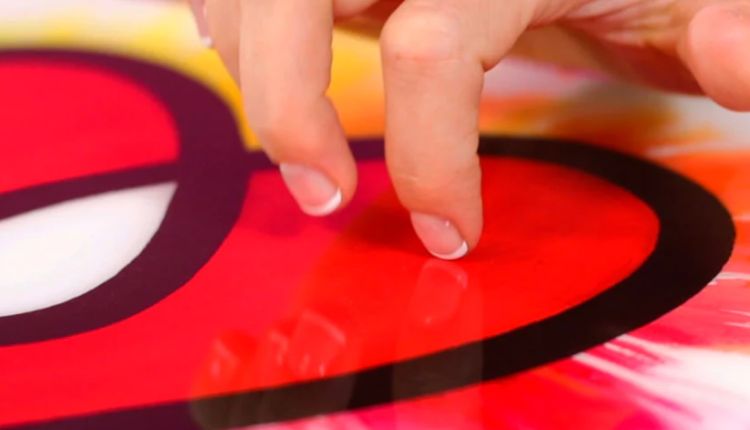Sticky resin can be a frustrating problem for DIY enthusiasts who work with epoxy or other types of resin. It can ruin the finish of your project and make it difficult to work with. However, there are some simple techniques that you can use to fix sticky resin in just a few minutes.
For more information, click here- How to Fix Sticky Resin
The first thing you should do is identify the cause of the stickiness. Sticky resin is usually caused by one of two things: improper mixing or incorrect ratios. If you didn’t mix the resin thoroughly enough, it may not have cured properly, leaving it sticky. If you mixed the wrong ratio of resin and hardener, it may not have cured at all.
To fix sticky resin caused by improper mixing, you can try heating it up. Place your project in a warm area or use a heat gun to gently warm up the surface of the resin. This will help to activate the curing process and should eliminate the stickiness.
If your sticky resin was caused by incorrect ratios, you may need to remove the entire layer and start over. However, if you catch it early enough, you may be able to fix it by adding more hardener. Mix up a small amount of hardener according to the manufacturer’s instructions and apply it directly to the sticky area. This should help to cure the resin and eliminate the stickiness.
Another technique that can be used to fix sticky resin is sanding. If your project has already cured but is still sticky, you can try sanding down the surface with fine-grit sandpaper. This will remove any sticky residue and leave a smooth finish.
In addition to these techniques, there are also some preventative measures that you can take to avoid sticky resin in the first place. Always make sure that you mix your resin thoroughly and follow the manufacturer’s instructions carefully. Use a clean mixing container and stir slowly to avoid introducing air bubbles into the mixture.
Sticky resin can be a frustrating problem for many DIY enthusiasts. Whether you are working on a woodworking project or creating a piece of art, sticky resin can ruin your hard work and leave you feeling disappointed. Fortunately, there are several DIY techniques that you can use to fix sticky resin in just a few minutes. In this essay, we will explore some of the most effective methods for fixing sticky resin and provide step-by-step instructions on how to use them.
Before we dive into the techniques, it is important to understand why resin becomes sticky in the first place. Resin is a two-part mixture that consists of a hardener and a resin. When these two components are mixed together, they undergo a chemical reaction that causes them to harden and cure. However, if the mixture is not properly measured or mixed, it can result in an incomplete reaction, leaving the resin sticky and tacky.
Now that we know why resin becomes sticky, let’s explore some DIY techniques for fixing it.
Technique 1: Heat Gun
One of the most effective ways to fix sticky resin is by using a heat gun. A heat gun is a tool that blows hot air onto the surface of the resin, causing it to soften and become more pliable. Here’s how to use a heat gun to fix sticky resin:
Step 1: Set up your workspace
Before you begin, make sure you have a clean and well-ventilated workspace. Lay down some newspaper or plastic sheeting to protect your work surface.
Step 2: Turn on your heat gun
Plug in your heat gun and turn it on to its lowest setting.
Step 3: Apply heat
Hold the heat gun about 6 inches away from the surface of the resin and move it back and forth in a sweeping motion. Be careful not to hold the heat gun too close or for too long in one spot as this can cause the resin to bubble or burn.
Step 4: Check for improvement
After applying heat for about 30 seconds, check to see if the resin has softened and become more pliable. If it has not improved, continue applying heat for another 30 seconds.
Step 5: Smooth out the surface
Once the resin has softened, use a plastic scraper or spatula to smooth out any bumps or uneven areas on the surface.
Technique 2: Alcohol
Another effective way to fix sticky resin is by using alcohol. Alcohol works by breaking down the chemical bonds in the resin, making it less sticky and more fluid. Here’s how to use alcohol to fix sticky resin:
Step 1: Set up your workspace
As with the heat gun technique, make sure you have a clean and well-ventilated workspace before you begin.
Step 2: Mix alcohol with water
Mix equal parts of rubbing alcohol and water in a spray bottle.
Step 3: Spray onto surface
Spray the alcohol mixture onto the surface of the sticky resin.
Step 4: Wait for improvement
Wait for about 5 minutes for the alcohol mixture to penetrate into the resin and break down its chemical bonds.
Step 5: Smooth out surface
Once the alcohol has had time to work its magic, use a plastic scraper or spatula to smooth out any bumps or uneven areas on the surface.
Technique 3: Sandpaper
If your sticky resin problem is limited to just one small area, sandpaper may be an effective solution. Sandpaper works by removing the top layer of hardened resin, exposing fresh material underneath that has not yet cured. Here’s how to use sandpaper to fix sticky resin:
Step 1: Set up your workspace
As always, make sure you have a clean and well-ventilated workspace before you begin.
Step 2: Choose appropriate grit sandpaper
Choose sandpaper with an appropriate grit level depending on how much material needs to be removed. For small areas, start with a fine grit (around 220) and work your way up if necessary.
Step 3: Sand affected area
Use circular motions with light pressure to sand away the top layer of hardened resin until you reach fresh material underneath.
Step 4: Clean up residue
Use a damp cloth or paper towel to wipe away any residue left behind from sanding.
In conclusion, sticky resin can be frustrating but fortunately there are several DIY techniques that can help fix this problem quickly and easily. Whether you choose to use a heat gun, alcohol or sandpaper depends on how much material needs fixing but all three methods are effective at solving this issue. Remember that prevention is always better than cure so make sure you measure and mix your two-part epoxy correctly before starting any project!

